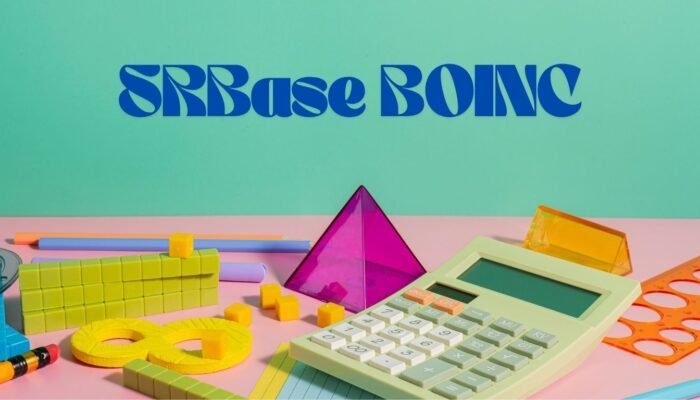The Future of Massage Therapy
Thanks to technological innovations, the landscape of massage therapy is rapidly evolving. These advancements enhance the practice and elevate the overall experience for therapists and clients. From deploying new techniques to integrating intelligent tools, the future holds much promise for massage therapy. Consider the impact of massage software, a transformative technology shaping the industry by streamlining processes and improving service quality. Technology will continue to be crucial to the development of massage treatment as we move forward. More individualized and successful treatment regimens are anticipated because of machine learning and artificial intelligence (AI) innovations. Real-time physiological data monitoring with wearable technologies can improve therapy accuracy and efficacy. Furthermore, virtual and augmented reality advancements might offer distinctive and engrossing relaxing experiences, opening massage treatment to a broader audience and increasing accessibility and enjoyment.
For more insightful articles, please visit globalexpressinfo.com
Technological Advancements in Massage Therapy
Several technological advancements have started to make their way into various massage therapy practices. Devices like intelligent massagers, which use sensors to determine muscle tension, are becoming commonplace. These tools not only aid therapists in delivering precise treatments but also provide clients with customized treatments tailored to their specific needs. This customization is grounded in data, ensuring each session is as practical as possible. Furthermore, innovations like virtual reality are being explored for their potential to offer guided relaxation experiences.
Moreover, advancements in biofeedback technology are helping therapists gain deeper insights into a client’s physical condition, allowing for more targeted and effective treatments. For instance, biofeedback devices can monitor heart rate variability (HRV), muscle tension, and other physiological indicators in real-time. This data can then be used to adjust the treatment approach on the fly, ensuring optimal results. Another emerging technology is therapeutic ultrasound, which can provide deeper muscle penetration and faster recovery times. These advancements enhance the effectiveness of treatments and open up new avenues for therapeutic intervention.
Read more: THE SECRET TO SHARPER FOCUS AND PERFORMANCE
Streamlining Practice Management
One of the most significant ways technology transforms massage therapy is through streamlined practice management. From scheduling software to comprehensive billing systems, technology makes it easier for therapists to manage their practices efficiently. This means more time focused on client care and less on administrative tasks. Automated reminders, online booking systems, and efficient payment processing are just a few examples of how technology can simplify daily operations and improve overall workflow, thus enhancing therapist productivity and client satisfaction.
Furthermore, client relationship management (CRM) technologies, which assist therapists in keeping track of client preferences, treatment histories, and communication logs, are frequently included in practice management software. This consolidated system allows therapists to access all the necessary information and deliver individualized and consistent care. Another area where technology can have a significant impact is inventory management. Therapists may minimize downtime and increase operational efficiency by ensuring they always have the resources they need with automated inventory tracking.
Improving the Client Experience
Client experience is paramount in any health service, and massage therapy is no exception. Modern software solutions provide clients with convenient booking options, personalized treatment plans, and virtual consultations. These changes are greatly enhancing the overall client journey in massage therapy practices. Clients now have more access to their therapists and can engage in continuous care even from afar. Additionally, technological tools that track client preferences and treatment histories make it easier for therapists to offer personalized and consistent services, increasing client loyalty and satisfaction.
Furthermore, digital tools such as mobile apps and online portals empower clients to take an active role in their care. Clients can easily book appointments, access treatment plans, and communicate with their therapists through these digital platforms. This convenience enhances the overall client experience and fosters a stronger therapist-client relationship. Moreover, the ability to receive virtual consultations can provide clients with valuable insights and guidance even when an in-person visit is not possible, ensuring continuity of care and timely support. Personalized follow-up reminders and feedback mechanisms enhance the client experience by keeping clients informed and engaged throughout their treatment journey.
Data-Driven Insights
Another exciting development is the use of data analytics to optimize practices. By gathering data on treatment outcomes, client preferences, and operational efficiency, therapists can make informed decisions to improve their services. This data-driven approach, including massage therapy, is becoming a standard in modern healthcare. For instance, understanding which treatments are most effective for specific conditions can help therapists tailor their services more precisely. The ability to analyze and act upon this data can lead to more personalized care, better patient outcomes, and a more scientifically grounded approach to therapy. Therapists can uncover trends and patterns that can guide treatment offers and marketing initiatives by using data analytics, which can also offer insightful information about client behavior and preferences. Therapists can better understand their clients’ needs and preferences by examining session frequency, treatment choices, and client feedback. New service packages, price strategies, and targeted marketing efforts can all be created using this data. Predictive analytics can also assist therapists in anticipating their client’s needs and proactively addressing possible problems, improving the client experience and increasing client loyalty.
Sustainability in Modern Practices
Sustainability is also playing an increasingly important role in modern massage therapy. The trend is moving towards more sustainable practices, from eco-friendly products to energy-efficient equipment. Incorporating these green initiatives benefits the environment and appeals to the growing number of eco-conscious clients. Practices that adopt sustainable methods often find themselves preferred by clients who value environmental responsibility. Some examples include using organic oils and biodegradable linens and ensuring that the business premises utilize renewable energy sources. These initiatives reduce the environmental footprint and enhance the brand image and client trust. In addition to using sustainable products and equipment, practices can implement environmentally friendly business practices, such as reducing paper waste through digital documentation and encouraging clients to use electronic communication methods. Energy-efficient heating and lighting systems, recycling initiatives, and other measures can help minimize the environmental effects of a massage therapy business. Emphasizing sustainability can support environmental protection and draw and keep customers with similar values. Furthermore, implementing sustainable practices can result in long-term cost reductions, benefiting the company and the environment equally.
Real-World Case Studies
Numerous practices have already integrated these technological tools and are reaping the benefits. Case studies showcase how state-of-the-art software has revolutionized their operations, enhanced client satisfaction, and led to business growth. Learning from these examples can provide valuable insights for other therapists considering similar upgrades. These case studies highlight real-world applications and successes that can inspire and guide future developments. For instance, one practice saw a 30% increase in client retention rates after integrating a comprehensive massage software system that offered seamless booking and personalized client management features. Another case study highlights a practice implementing a robust data analytics platform to track treatment outcomes and client feedback. The practice was able to determine the best therapies for particular ailments and modify their offerings as a result of the analysis of this data. Higher customer satisfaction rates and better client outcomes were the results of this data-driven strategy. Furthermore, by optimizing its marketing strategy with data analytics, the firm was able to enhance customer acquisition and revenue growth. These real-world examples show how technology may revolutionize massage therapy and offer other practitioners a path forward for innovation and expansion.
Conclusion
The integration of modern technology in massage therapy practices is a game-changer. The future is bright for this field, from advanced tools and data-driven insights to sustainable practices. Embracing these technological advancements will undoubtedly contribute to more effective treatments and happier clients. The continued evolution of massage therapy through technology promises a more efficient, sustainable, and client-centric approach, making it an exciting time for practitioners and clients to be part of this transformative journey. As the industry continues to evolve, massage therapists must stay informed about the latest technological advancements and consider how they can be integrated into their practices. By embracing innovation and continuously seeking ways to improve, therapists can enhance the quality of care they provide and ensure the long-term success of their practices. Whether through the adoption of cutting-edge tools, the implementation of data-driven strategies, or the commitment to sustainability, the potential for positive change in massage therapy is vast and promising.






